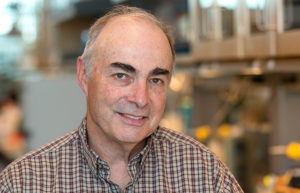
Joseph Harding, Ph.D., professor of integrative physiology and neuroscience at Washington State University, will present the annual Lord Lecture at Allegheny College at 8 p.m. on Monday, April 9, in Ford Memorial Chapel. His talk, “Designing Medicine’s Holy Grail: Development and Therapeutic Potential of Small Molecule Growth Factor Mimics,” is free and open to the public.
Harding graduated from Allegheny College in 1970. (His wife, Barbara, also a chemistry major, graduated from Allegheny in 1969.) He earned his Ph.D. from the University of Delaware in 1975 and has served on the Washington State faculty for more than 40 years.
Harding’s laboratory currently has been developing small molecule allosteric regulators of major growth factors as pharmaceuticals for the treatment of various clinical indications ranging from neurodegenerative diseases to cancer to defective wound repair. His research activities have been funded by grants from the National Institutes of Health (NIH), National Science Foundation, U.S. Department of Defense, Life Science Discovery Fund, Murdock Foundation, Michael J. Fox Foundation, Alzheimer’s Drug Discovery Foundation, and National Multiple Sclerosis Society.
Harding also is chief scientific officer, director and co-founder of M3 Biotechnology, Inc. The Seattle-based company is developing novel treatments for neurodegenerative diseases based on technology developed at Washington State.
Harding is the co-author of more than 220 peer-reviewed and invited publications and lead inventor on nine U.S. and numerous foreign patents. He has served on several NIH study sections, has been a past research director for the Washington chapter of the American Heart Association, and has been the recipient of an American Heart Association Established Investigator Award and a Fogarty International Fellowship.
The Lord Lecture has been bringing the nation’s most distinguished chemists and scientists to Allegheny annually since 1991 and is made possible through the support of the Thomas Lord Charitable Trust. The fund is closely linked to the Lord Corporation, a major manufacturer of adhesives, rubber chemicals and other products.
For more information, contact the Allegheny College Department of Chemistry at (814) 332-5363.